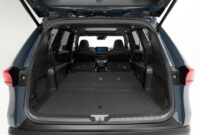We must admit that for any buyer who is not familiar with the art of modern cars, terms such as hybrid and micro-hybrid can be very confusing. But with some minimal notions it should be very easy for us to talk about the idea of the micro-hybrid dieselsemi-hybrid, or mild hybridwith the ECO label, especially due to the fact that there are hardly any other types of hybrids that use a diesel engine on the new car market.
Of every four diesels registered in Spain today, one of them uses an electric motor with which, technically, it can be considered a micro-hybrid and therefore enjoy the precious ECO label.
But why should you (or shouldn’t you) buy an ECO labeled micro-hybrid diesel?
Buy a diesel micro-hybrid
In recent years, micro-hybrids, diesel and gasoline have proliferatedcars with an internal combustion engine, with less complex systems than traditional hybrids, but with electric support motors, batteries with a certain capacity to accumulate energy and 24 and 48 volt installations.
Manufacturers defend this technology for achieving that the support of the electric motor reduces the load on the internal combustion engine and, therefore, consumption and emissions; for making a better use of energy, for its regenerative capacity; for improving the performance of the internal combustion engine, for that extra push of the electric motor; and even for allowing, in certain circumstances, the internal combustion engine to be completely turned off to “flatten”. Although initially this type of micro-hybrid is not designed to move solely by the action of the electric motor, as is often the case with vehicles that we consider to be full hybrids.
In recent years, numerous cars with micro-hybrid technology have reached the market, combined with both diesel and gasoline engines, although the latter are the most in demand.
In this video we talk about micro-hybrids as an alternative to diesel.
The advantages of micro-hybrid diesel
It is true that micro-hybrids have a basic advantage, its efficiency and, therefore, its consumption, should be better than in a car with the same internal combustion engine that does not use this system. In most cases the difference is a few tenths of a liter per hundred kilometers.
But the great advantage of a micro-hybrid lies, above all, in the legal treatment of this type of car. In Spain, for example, micro-hybrid diesels have an ECO label. The ECO label provides many advantages, for example access to areas restricted to traffic in Low Emission Zones. A modern diesel or gasoline, without micro-hybridization, receives a less favorable label, the C label.
In any case, and as diesel, Diesel micro-hybrids still have some disadvantages of modern diesel-powered cars. By using the same anti-pollution systems (Adblue, EGR, particulate filters) as diesels without micro-hybridization, they will have the same propensity for breakdowns as any modern diesel.
The offer of diesel and micro-hybrid cars
In recent years, the diesel supply available on the market has been significantly reduced. And diesel micro-hybrids only represent a part of that offer. This technology is proliferating, above all, in premium brand cars, and also in some manufacturers that have opted for this technology in volume products, such as Hyundai and Kia.
In the premium segment we find other brands that have diesel mechanics with an ECO label, such as Audi, BMW, Jaguar, Land Rover, Mazda, Mercedes-Benz and Volvo.
Ultimately, the choosing a micro-hybrid diesel must continue to answer the same question that requires the choice of a diesel, do I need a car to travel tens of thousands of kilometers a year? In any other case, there are still even better options, such as a full hybrid – we use this name to accentuate the differentiation with micro-hybrids – or even a gasoline micro-hybrid.






